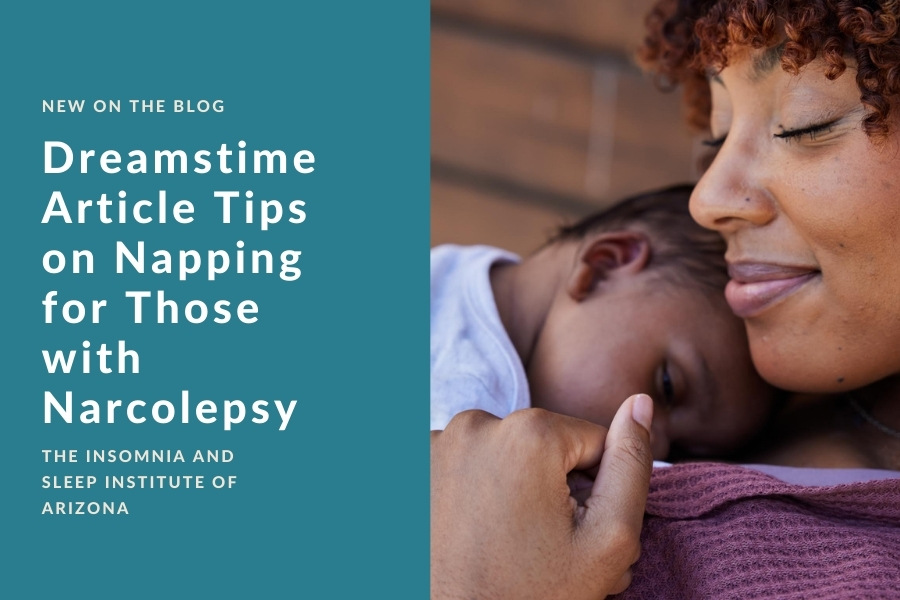If you struggle with narcolepsy, a combination of treatments may be best—including lifestyle changes. At The Insomnia and Sleep Institute of Arizona, we treat all sleep disorders in people of all ages, including narcolepsy and hyper insomnia. Here, we are staffed exclusively by sleep specialists and led by triple board-certified Dr. Ruchir P. Patel, current Physician Director elected Board President of Maricopa County Medical Society. We are driven by outcomes, and that starts with the right diagnosis. That’s why consultations are always with sleep specialists who can diagnose sleep disorders and get you on the fast track to testing and treatment.
Narcolepsy is an oft-misunderstood sleep disorder, exacerbated by incorrect representations in media. In reality, narcolepsy is a sleep disorder that can seriously disrupt quality of life. Napping with narcolepsy is an important topic, as it can be a key factor in managing the disorder. Maintaining a routine sleep schedule is critical when planning naps, and it is often suggested that those who have narcolepsy aim to be in bed for eight hours each night (though individual recommendations will vary and should be made in conjunction with your sleep doctor). This means the same wake-up and bedtime. When this is established in new narcolepsy patients, nap planning can commence.
Napping Tips
According to the experts tapped for the Dreamstime article, naps should be kept short at around 15 minutes. In some cases, narcolepsy patients only get relief from prolonged naps (30+ minutes). Naps may be lengthened as you work with your sleep doctor to create the right plan for you, but the longer a nap, the deeper the sleep and the higher the risk of slow-wave sleep. This is the stage that increases the odds of a person waking up drowsy (known as sleep inertia). It is often recommended that those with narcolepsy take no more than two 15-minute naps per day. This is more than what many without narcolepsy get, but keep in mind that narcolepsy leads to disturbed sleep at night. However, excessive naps during the day can actually worsen this disruption—it is a delicate balance that should be found by your sleep specialist.
In most cases, napping longer than 40 minutes can seriously disrupt the onset of sleep in the evening. In the article, naps are likened to “sleep candy.” Just like most people don’t give children candy right before dinner, since that disrupts their desire for a healthy meal, napping too long during the day or too close to bedtime can be detrimental. For most people 15 – 20-minute naps are ideal. Of course, those who have a circadian shift or work graveyard will have very different sleep and nap schedules. A nap for such people before their work shift is called an “anchor nap” and can help keep them regulated.
Warding Off “Sleep Attacks”
When a person with narcolepsy experiences a sleep attack, that is when the body makes a decision to sleep regardless of the inconvenience. It can be helpful to “take the nap before the nap takes you” according to sleep coaches interviewed for the article. Successful napping can take work and practice—as well as training. A person must be able to lie down, fall asleep quickly, and wake up easily. A common routine to achieve this starts with using the restroom, then silencing any electronics. A series of wakeup alarms, each with different ringtones, can help train the body to nap. You may want to use noise-canceling headphones or earplugs as well as a white noise machine. Do your best to mimic a healthy bedtime environment, such as darkening the room as much as possible and using the same pillow and blanket that you do at night. Assume your typical sleep position.
When you are ready to nap, give yourself 5 – 10 minutes to fall asleep, 15 – 20 minutes to nap, and 10 minutes to wake up. In total, this means your alarm might be set for 30 – 40 minutes from when you lie down. Whenever possible, plan for naps the same time of the day. For those with hectic schedules, map out your napping just like you do with every other appointment. Pinpoint the best time for naps, pencil it in, and make it a priority. If you or your child have narcolepsy, or you suspect it, it is critical to get the right expert help immediately. Schedule a consultation with The Insomnia and Sleep Institute today. Simply call the office, or for the quickest response fill out the online form right now.





